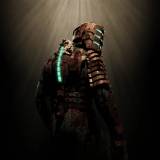Where Splinter Cell Conviction fails and succeeds.
By OmnomnomPancake 1 Comments
Conviction tried to find this middle ground between stealth and action. It built the fundamentals of the game for this, and it works very well in the early environments, where you're effectively in a stealth playground.
Where the game fails is later on. Two points that act as case studies: The car garage, and the building assault directly afterwards.
I would normally play a Splinter Cell by discreetly moving past the enemies. If I needed to take them out, it would be quietly, one by one. After taking out a guard, I would save, then move forward. If I was caught or the enemies had any suspicion of my presence, I would reload the save and try again.
For the Car Garage, I am put in an instant fail state if my presence is detected in any way. That is, if I use any of my gadgets, am detected, or a body is found. The problem with this is that they've taken away the tools I have found in previous games to be fundamental to this type of trial and error stealth, including night/thermal/emf vision, a whistle feature to lure guards, and the hiding of fucking bodies, and a quick save feature.
Ubisoft has shown me that within their game pure stealth is very difficult to achieve. I got through eventually, but having bodies spotted because I couldn't move them, or guards who were unwilling to move from a heavily lighted position... it was a clusterfuck. Also, taking out 4 out of the 6 guards, only to have one randomly shoot his flashlight in my direction.. welp, have fun going back to the start. Even simply giving me the quick save back, and letting the detection fail persist would have been fine.
The assault of the Third Echelon base following the garage sequence then showed how poorly this game functions with pure action. I mean, first off, I'm playing a Splinter Cell, so excuse me when I get frustrated by enemies that throw themselves out of wall and roof ducts and immediately spot and start shooting me. It's dumb that I've been given no prompt of their presence before this push into direct combat.
Secondly, thanks for turning what was an open area level design into a narrow corridor one. Nothing makes me happier than being forced to move forward into an area incredibly dense with enemies already in suspicion mode. Taking them all out in a stealthily manner is exceedingly difficult, nigh impossible.
I'm placed into a position where I must confront them in direct combat, and I'm now using cover mechanics that are terrible, and shooting mechanics that are sometimes spotty. I've been playing this on Realistic, hoping that the theme the earlier levels had - allowing me to escape these direct confrontations - was going to persist throughout the entire experience. I was wrong, and now I get shot up in seconds.
TL;DR - Splinter Cell Conviction succeeds when it combines stealth and action components, but never forces you into either corner. It allows you to work with the tools you've been given, adapt to the situations, and feel like a proper badass.
Splinter Cell Conviction fails when it forces you into a corner of pure stealth or pure action, revealing all the missteps in a game that often feels like it's still moving with a 2006 project design.

Log in to comment